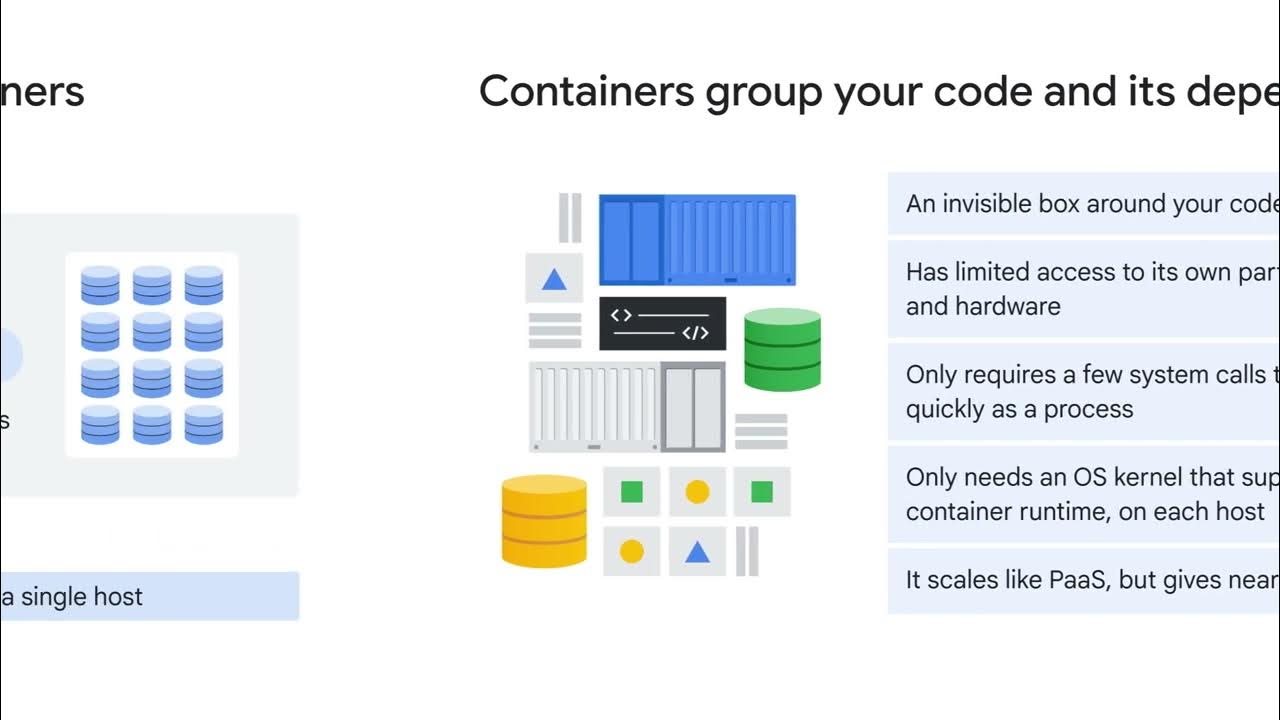How to self-host and hyperscale AI with Nvidia NIM
Summary
TLDRIn this insightful video, the host explores the future of AI workforce with the advent of Nvidia's Nim, a tool that simplifies the deployment and scaling of AI models on Kubernetes. Highlighting the potential of specialized AI agents to transform industries, the video demonstrates how Nim can be utilized to create a seamless, efficient AI-driven workforce, from customer service to programming, emphasizing the augmentation rather than replacement of human labor. The host's personal ambition to build a billion-dollar business as a solo developer is made more plausible with the ease and efficiency of deploying AI models using Nim.
Takeaways
- 🚀 Nvidia has released a tool called Nim, which is an inference microservice for AI models, making it easier to scale AI applications.
- 🔮 The future workforce is predicted to be heavily influenced by AI, with many jobs being automated by robots.
- 🧠 AI models like LLM, Mistral, and Stable Diffusion are already changing the world but have not yet become mainstream.
- 💾 Nim packages AI models with necessary APIs for inference, including engines like Tensor RT and data management tools, all containerized for easy deployment.
- 🛠️ Nvidia's H100 GPU was used to demonstrate the capabilities of Nim, showcasing its ability to handle large-scale AI workloads.
- 🌐 Nims can be deployed in various environments, including the cloud, on-premises, or even locally, saving development time and effort.
- 🤖 The script humorously suggests replacing human roles with AI agents for various tasks, emphasizing the potential for AI to augment human work rather than replace it.
- 💻 The video provides a practical example of how to use Nim with Python, demonstrating the ease of accessing and utilizing AI models through an API.
- 🔧 Nvidia's platform includes a playground for experimenting with Nims, offering a range of models for different specialized tasks.
- 🔄 The use of Kubernetes allows for automatic scaling and healing of microservices, which is crucial for handling increased traffic and maintaining service reliability.
- 🛑 The video emphasizes the importance of latency in AI services and how tools like Triton help maximize performance without requiring users to be experts in optimization.
Q & A
What is the significance of the H100 GPU in the context of the video?
-The H100 GPU is significant because it provides the computational power necessary to run and scale AI models efficiently, enabling the self-hosting of an 'Army of AI agents' as mentioned in the script.
What does the term 'Nim' refer to in the video?
-In the context of the video, 'Nim' refers to inference microservices provided by Nvidia, which package AI models along with necessary APIs for running them at scale, including inference engines and data management tools.
How does the video suggest AI will change the workforce in the next 10 years?
-The video suggests that AI will transform the workforce by automating jobs that can be done by a robot, with a potential shift towards a network of highly specialized AI agents running on platforms like Kubernetes.
What is the role of Kubernetes in deploying AI models as described in the video?
-Kubernetes is used to containerize and deploy AI models, allowing for easy scaling and management of these models in various environments, including the cloud, on-premises, or local PCs.
What are the technical challenges mentioned in running AI models at scale?
-The video mentions the need for massive amounts of RAM and the parallel computing capabilities of a GPU for running inference with AI models. Additionally, scaling up this technology has traditionally been difficult.
How does Nvidia Nim address the issue of scaling AI models?
-Nvidia Nim addresses scaling issues by providing containerized AI models that can be deployed on Kubernetes, which allows for automatic scaling when traffic increases and self-healing when issues arise.
What is the purpose of the playground mentioned in the video?
-The playground is a feature that allows users to interact with and experiment with various AI models, such as large language models and image/video processing models, directly in the browser or via API.
What is the potential impact of AI models like 'llama 3', 'mistol', and 'stable diffusion' on mainstream consciousness as per the video?
-The video suggests that while these AI models have already changed the world, they have barely penetrated mainstream consciousness, indicating that there is significant potential for further impact as these models become more widely recognized and utilized.
How does the video illustrate the practical application of AI models in a business scenario?
-The video uses a hypothetical scenario of 'Dinosaur Enterprises' where AI models are deployed to replace various human roles, such as customer service agents, warehouse workers, product managers, and even a mental health AI for the remaining human workforce.
What programming perspective is provided in the video regarding the use of Nvidia's H100 GPU and AI models?
-The video demonstrates how to use Python scripts to interact with AI models running on an H100 GPU, including using HTTP requests to access the models and the Open AI SDK for ease of integration.
What is the significance of the Open AI SDK mentioned in the video?
-The Open AI SDK is significant as it has become an industry standard for interacting with AI models, providing a familiar and widely adopted interface for developers working with AI.
Outlines

此内容仅限付费用户访问。 请升级后访问。
立即升级Mindmap

此内容仅限付费用户访问。 请升级后访问。
立即升级Keywords

此内容仅限付费用户访问。 请升级后访问。
立即升级Highlights

此内容仅限付费用户访问。 请升级后访问。
立即升级Transcripts

此内容仅限付费用户访问。 请升级后访问。
立即升级浏览更多相关视频

Nvidia 财报分析! 下一个增长点在哪? 风险在增加?【美股分析】

Offline AI Chatbot with your own documents - Anything LLM like Chat with RTX - | Unscripted Coding

Containerizing and Orchestrating Apps with GKE

AI Has a Fatal Flaw—And Nobody Can Fix It

NVIDIA CEO on Agents Being the Future of AI

So Google's Research Just Exposed OpenAI's Secrets (OpenAI o1-Exposed)
5.0 / 5 (0 votes)
